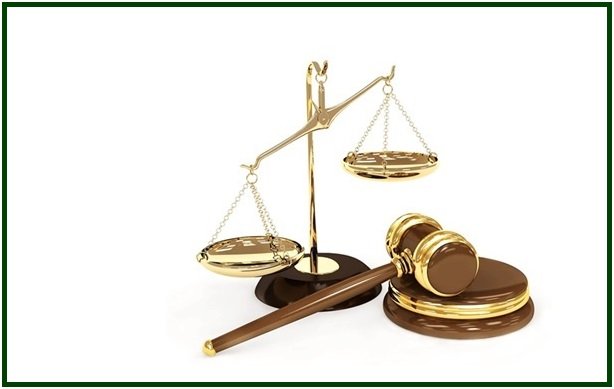
Life Shows That There Is No Authority, No
Leadership, And No Power Higher Than Truth
Carlos Cardoso Aveline

00000000000000000000000000000000000000000
The following text reproduces Chapter Two of
the book “The Fire and Light of Theosophical
Literature”, Carlos Cardoso Aveline, The
Aquarian Theosophist, Portugal, 255 pp., 2013.
00000000000000000000000000000000000000000000000
“If the ‘false prophets of Theosophy’
are to be left untouched, the true
prophets will be very soon – as they have
already been – confused with the false.” [1]
(Helena Blavatsky)
Upon being informed of the existence of falsehoods in the theosophical literature, some readers react by asking:
“Who can say what part of the theosophical literature is good for reading, and what part is not? What are the criteria to judge that? And who invented the idea that there is such a thing as pseudo-theosophy?”
The answer is well-known by some and surprising to others. In the book “The Voice of the Silence” the distinction is made between the Doctrine of the Heart and the Doctrine of the Eye. This is the same difference between essence and form, fact and appearances, authenticity and falsehood, Theosophy and Pseudo-Theosophy. The first to use the expression Pseudo-Theosophy was H.P. Blavatsky, who gave the theosophical movement “The Voice of the Silence”.
Besides, who is to forbid people from freely debating what books are fraud and what books are not, in theosophical literature? Who is it that can forbid, in these Internet times, members of any theosophical association from knowing that Annie Besant declared she had attained the ideal of human perfection, or final liberation, and was, therefore, a Master of the Wisdom? Or that she talked to several kinds of imaginary Masters and even to “Lord Christ”, who she herself invented? All of this was narrated by Jiddu Krishnamurti’s official biographer, Mary Lutyens. [2]
Who can prevent the members of the Adyar Society from seeing the importance of William Judge’s writings, or from being amazed at the details of the 2007-2008 disgusting electoral coup d’état against Radha Burnier through a smear campaign based on lies about her health; and this, carefully detailed by Mr. Pedro Oliveira [3] himself? Who can prevent people from knowing the truth now on the Internet, or make sure people don’t have the courage to read José Ramón Sordo’s personal testimony of his disappointment with the ritualistic illusions at Adyar?
Everyone can freely judge, evaluate and decide what to read and what not to read. Some study the original theosophy, while many others are dedicated to whatever other fields of interest they may have. Yet the rhythm with which the theosophists of the Adyar Society are awakening from the old Vatican-like and “talking-to-masters” practices of the 1900-1934 period is getting faster. This is good for the esoteric movement in its various ramifications.
The roots of “theosophical” decay and paralysis are in a false literature and ritualism. Who is it that should try to forbid people from discussing facts? There is also decay and paralysis among students of the original teachings of theosophy. In this case, the root seems to be a sort of church-like, unquestioning and relatively lifeless study.
The whole of the movement is now taking steps out of the 20th century’s illusions. There are dozens of thousands of dedicated students in the movement. Many of them are friends of our websites, or read “The Aquarian Theosophist”. They are making a difference as they help dissipate the 1900-1934 cloud of pseudo-theosophical disinformation.
In esoteric philosophy, it is incorrect to feel or think that “there is no truth higher than our authorities”. The fact is that there is no authority, or leadership, or power, higher than truth.
Everyone can read the texts by British author Geoffrey Farthing – for instance – and see one of the main leaders of Adyar in the last century making a clear description of Annie Besant’s Society and a correct proposal for it to recover from illusion. Farthing pointed out the way, and in one of his texts he frankly discusses the past and future of the Esoteric School. [4]
Of course, what is true about Adyar Society is at least partially true of other theosophical associations. No one is above mistakes. The path to illusion and the path to wisdom are two possibilities at any time, everywhere. However, danger can be reduced by regularly examining this question: to whom, or to what, am I loyal above all?
NOTES:
[1] H.P. Blavatsky in her article “On Pseudo-Theosophy”, which was published at “Theosophical Articles”, HPB, Theosophy Company, Los Angeles, volume I, p. 163.
[2] The present Chapter makes reference to Mary Lutyens, José Ramón Sordo, and Geoffrey Farthing. These three thinkers wrote texts examining mayavic or delusive practices in the theosophical movement, which are published in our websites.
[3] Pedro Oliveira served the Adyar Society as International Secretary during the 1990s. Pedro played a key role in preventing John Algeo’s victory in the 2007-2008 attempt to get to the international presidency by questionable means. See his text The 2007-2008 Events in Adyar, which is available at our websites.
[4] The text “To the Outer Head of the Adyar E.S.”, by Geoffrey A. Farthing, is available at our websites.
000
In September 2016, after a careful analysis of the state of the esoteric movement worldwide, a group of students decided to form the Independent Lodge of Theosophists, whose priorities include the building of a better future in the different dimensions of life.
000